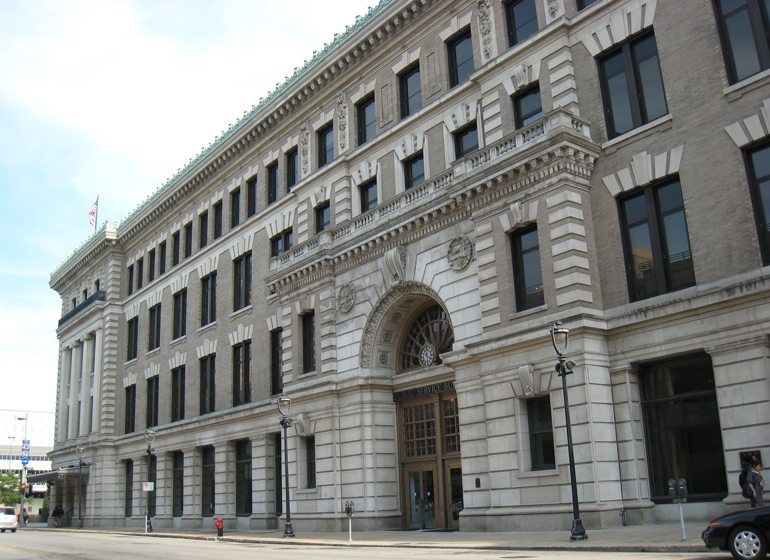Wisconsin Electric is planning to build a 1,200-megawatt combustion turbine natural gas power plant on its Oak Creek campus and will also seek approvals for a new liquefied natural gas storage facility on the campus. The utility’s plans also call for a 130-megawatt reciprocating internal combustion engine project in the Kenosha County town of Paris.
The utility, part of We Energies and a subsidiary of Milwaukee-based WEC Energy Group, submitted applications for the two generation projects to the Wisconsin Public Service Commission on Monday.
WEC Energy Group’s current five-year capital plan includes $1.2 billion for combustion turbine natural gas, $211 million for RICE generating capacity and $860 million for liquefied natural gas storage. Those are the company’s current estimates included in investor presentations and will be refined as they are submitted to regulators for approval, according to Dan Krueger, executive vice president – WEC Infrastructure and generation planning at WEC Energy Group.
Site development would begin in August 2025 for the Oak Creek combustion turbine project, which includes five turbine generators. Those units would go into service between the fall of 2027 and summer 2028. Plans call for the plant to be located either directly west or just northwest of the Elm Road Generating Station on the utility’s campus along the shore of Lake Michigan.
The RICE project, which would be located near Highway KR and 172
nd Avenue in Paris, would begin in March 2025 with an in-service date in August 2026 while the liquefied natural gas project in Oak Creek would begin commercial operations in the summer of 2027.
The projects are part of We Energies’ generation reshaping plan. The Wisconsin Public Service Commission has previously approved investments in nearly 1,300 MW of renewable energy generation projects, primarily for solar, plus 350 MW in battery storage.
The investment for WEC Energy Group, the parent company of We Energies and Wisconsin Public Service, on currently announced solar and battery projects is more than $1.6 billion. The current five-year capital plan includes $4.5 billion for solar, $1.9 billion for wind and $400 million for battery storage.
“It's important for everybody to know that we are predominantly adding renewables to our plan. The key to making renewables more the core of the power fleet is having limited duty, dispatchable gas plants available,” Krueger said, explain that the natural gas plants will be used when renewables are not able to meet demand. “They fill those gaps and then they back off.”
Krueger said there is sometimes a misconception that the utility is building new natural gas plants to replace the coal plants it will be retiring. Older coal plants at the Oak Creek campus are slated for retirement this year and next while newer units are being switched over to natural gas.
“There’s this misconception that because we’re building them that we’re going to be running them all the time,” Krueger said. “That is not the plan.”
He said not running the natural gas plants regularly is a key part of reaching WEC’s target of reducing carbon dioxide emissions by 80% compared to 2005 levels by 2030. Emissions were down 54% by the end of 2023.
“We don’t want to run them any more than we need to,” Krueger said.
Part of the need for the new natural gas plants is being driven by shifting rules and regulations from the electric grid operator, Midcontinent Independent System Operator or MISO, and from the U.S. Environmental Protection Agency.
MISO is increasingly looking at the demand needs of the grid differently.
“Traditionally as a utility, the grid operator just looked at that summer peak and they said, ‘well, that's going to be your highest demand. The air conditioners are cranking as long as you can show us you have dispatchable plants and you can meet that summer peak, we're good.’ That's a legacy from an era when 90% of your plants were dispatchable,” Krueger said.
Now, the operator is looking more closely at each season and accounting for demand and capacity differently.
“It's very smart because as you can guess in the summer with all of this solar, they're more comfortable,” Krueger said. “In the winter when it is less sunny in a place like Wisconsin, they're less comfortable. And that is directly leading to the planning for dispatchable gas plants.”
Pending EPA rules essentially spell the end for coal plants and the utility plans to only use coal as a backup by the end of 2030 and eliminate its use completely by 2032.
WEC Energy Group’s utilities are seeking approval from the PSC to begin accounting for up to $200 million long-lead time materials.
“The way we interpret the rules is the same way that many other utilities are interpreting the rules,” Krueger said. “There are long lead times, there is great demand for certain components, so we need to get in the queue, we need to reserve our spot, reserve our pricing and make sure we can bring these plants online in time to be fully compliant.”
The costs would include $145.7 million for the Oak Creek combustion turbine project, $33 million for the Oak Creek liquefied natural gas project at $21.3 million for the Paris RICE project.
Without being able to begin accounting for the projects as construction work in progress, the utilities say they would pay nearly $20 million extra to finance the purchase of the materials until the investments go into commercial operation and are incorporated into electric rates.
